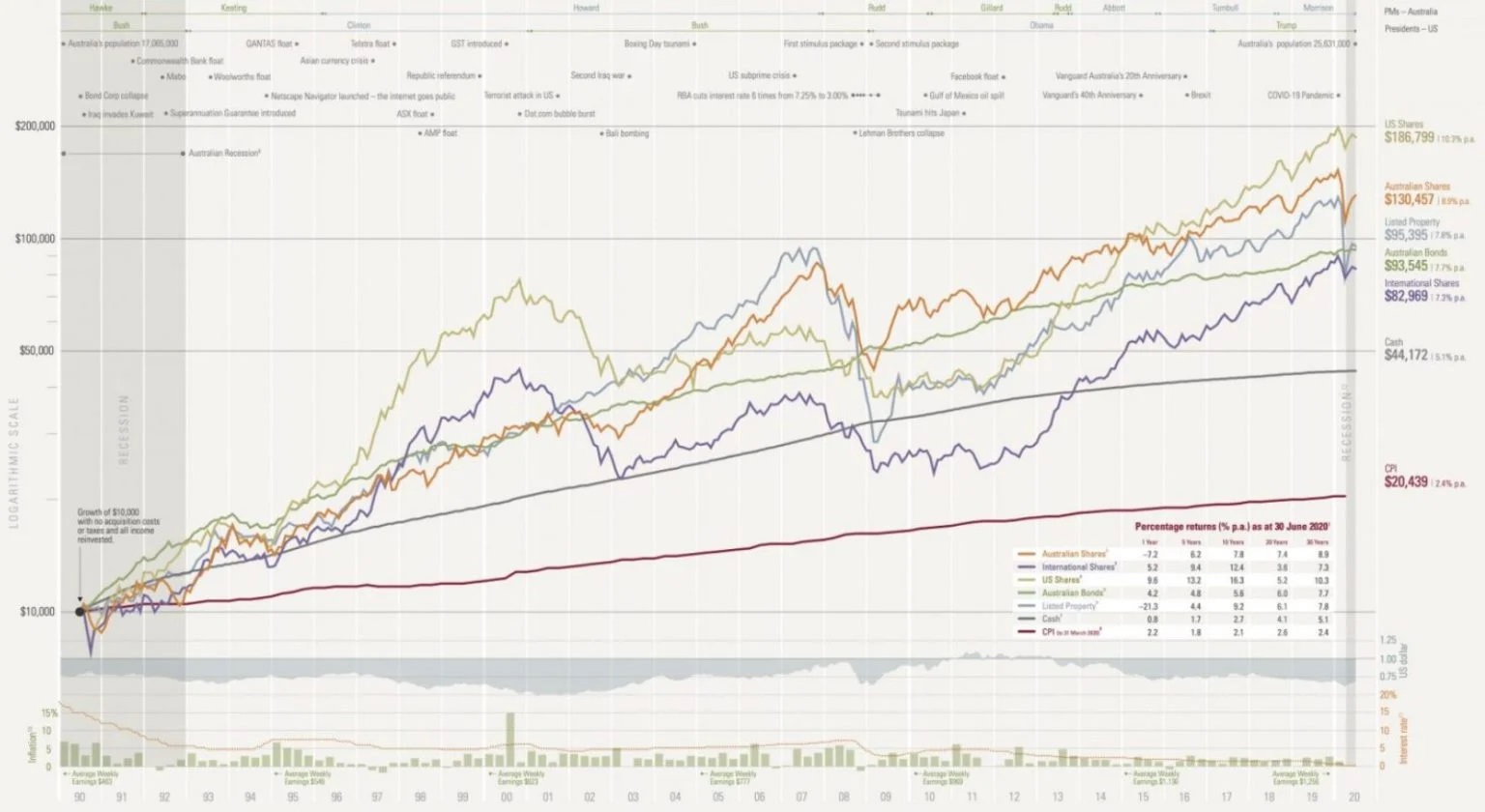First-home buyers may get more help in another 'pandemic budget'
First-home buyers may get further help to get into Australia’s booming property market in a jobs-focused federal budget, amid calls for a significant boost for social and affordable housing.
Tuesday’s budget will centre on creating jobs and will include more stimulus measures to drive Australia’s faster-than-expected economic recovery during the coronavirus pandemic.
While the property sector may miss out on big-ticket items, the budget will feature housing-related measures that may include changes to the First Home Loan Deposit Scheme (FHLDS).

Housing-related measures will feature in the federal budget. Picture: Getty
Assistant Treasurer and Housing Minister Michael Sukkar said housing and housing affordability issues had been a focus of budgets for a number of years and this budget would be no different.
Mr Sukkar said the FHLDS, which helps first-home buyers purchase a home sooner, had been a great success and the now-closed HomeBuilder program meant the industry was busier than it was before the coronavirus pandemic.
“We’ll continue to support first-home buyers and the residential construction industry, absolutely, in the budget,” he said earlier this week.
Realestate.com.au economist Paul Ryan said the budget’s direct effects on the property market usually take the form of encouraging construction activity or first-home buyer incentives.
“Given the success of HomeBuilder, with detached building approvals at levels not seen for at least 20 years, further incentives to build homes are probably not going to do much more than add to building costs,” Mr Ryan said.
That was due to limits on the release of new land for development and current shortages of key building inputs such as timber, he explained.
But Mr Ryan noted higher-density approvals remain relatively low.
“The longer lead times of these projects require more certainty around demand in a region, and there remains significant uncertainty about demand in the future, from vaccination and immigration/travel reopening timings,” he said.
“The construction of social housing could stimulate activity and employment that remains affected by this uncertainty and could be started relatively quickly.
“A lack of social or low-cost housing is often cited as an issue as housing prices rise so this could provide some relief.”

The budget will indirectly affect the property market by stimulating economic activity. Picture: realestate.com.au/buy
Mr Ryan said the budget will also indirectly affect the property market by stimulating economic activity.
“Higher growth, employment and wages growth will push prices up,” he said.
“Reducing tax burdens will leave people able to allocate more money to repay mortgages – and people desire more housing as they get wealthier.”
Jobs budget with more stimulus, some tax relief
Treasurer Josh Frydenberg said the budget will lay out the next phase of Australia’s economic recovery plan and will continue to prioritise job creation and driving the unemployment rate – currently 5.6% – lower.
“This will be another pandemic budget being delivered in the midst of a once-in-a-hundred-year pandemic and just seven months after the last budget,” he said in a pre-budget speech.
The low and middle income tax offset, which provides between $255 and $1080 in tax relief for more than 10 million Australians, is expected to be extended for another year at a cost of about $7 billion.

The low and middle income tax offset is expected to be extended for another year. Picture: Getty
ANZ economists said the tax offset, currently set to expire in 2020/21, is likely to be extended for only one year but it is possible it may become a permanent feature.
The big-spending budget will also include:
- Lower budget deficits than estimated in the mid-year budget review, thanks to the faster-than-expected recovery from Australia’s first recession in almost 30 years;
- Further COVID support, including for industries still impacted by the continued closure of international borders, particularly tourism and education;
- $1.7 billion to make childcare cheaper and increase women’s participation in the workforce, through subsidy changes starting in July 2022;
- An expected $10 billion for aged care over four years;
- $1.2 billion to grow the digital economy;
- $600 million for a National Recovery and Resilience Agency to help local communities respond to large-scale natural disasters, for projects such as bushfire and cyclone proofing houses; and,
- $250 million for a sixth round of the Building Better Regions Fund for shovel-ready infrastructure projects, amid a record shift into regional areas from the capital cities.
More first-home buyer support likely
Housing industry groups have called for an expansion of the First Home Loan Deposit Scheme, which helps low and middle income earners buy a modest first home with a deposit as low as 5% without needing to pay for lenders mortgage insurance.
Another 10,000 FHLDS places will be made available for the 2021/22 financial year, according to the National Housing Finance and Investment Corporation, which administers the program.
There is speculation the government may lift the home price thresholds under the FHLDS as property prices surge.

First-home buyers may get more support in the budget. Picture: realestate.com.au/buy
Mr Ryan said the scheme is a good policy to relieve housing accessibility issues for many first-home buyers.
“With prices rising quickly, saving a 20% deposit and stamp duty has become increasingly difficult, so the government providing insurance for low-deposit loans is a relatively cheap way to provide more first-home buyers access to the property market,” he said.
Mr Ryan said the main way the FHLDS should be expanded was by removing the limits on the number of places.
“It is unfair that some in the same position are not able to access the scheme,” he said.
The price caps are currently $700,000 in Sydney and $600,000 in Melbourne, where realestate.com.au data shows median sale prices for houses have reached $1.065 million and $791,799 respectively.
Mr Ryan said increasing the price and income thresholds would be helpful for some people, but would target the scheme less effectively.
“The scheme already applies to around half of all dwellings in Sydney and around 60% in Melbourne – although obviously not in inner cities,” he said.
“But those looking in these locations tend to be higher-income households so both the income and price thresholds would need to increase to help these buyers.”
In its budget submission, the Real Estate Institute of Australia argued additional places could be created for the FHLDS on a long-term basis “as the 10,000 per annum releases is an arbitrary number”.
The Housing Industry Association wants the FHLDS to become a permanent program, with its submission also recommending the government remove the 10,000 annual cap on places or substantially increase the number of places over the budget horizon.
The October budget included an additional 10,000 First Home Loan Deposit Scheme places in 2020/21 specifically for first-home buyers purchasing a new home or a newly-built home.
In its budget submission, Master Builders Australia called for the government to continue and increase funding for the new homes scheme in 2021/22 and increase the home price caps.
Calls for more social and affordable housing
Community and housing organisations have again called for significant new investment in social and affordable housing from the federal government and the states, which have primary responsibility for social housing.
The groups labelled the October budget a “missed opportunity” on social housing. The delayed 2020/21 budget included an additional $1 billion in low-cost finance through the NHFIC to support the construction of affordable housing, taking the total to $3 billion. The federal government also provides $4.6 billion a year in rental assistance.
Westpac economists said there may be measures in this year’s budget to address the issue of housing affordability through social housing and rent assistance.
Anglicare Australia executive director Kasy Chambers said the rental crisis is getting worse, calling on the government to tackle housing affordability in the budget.
“We need to invest in affordable housing,” Ms Chambers said.
“Our shortfall is massive. We need 500,000 new social and affordable rentals across Australia.”

Community and housing groups argue Australia needs more social and affordable housing. Picture: Getty
National housing campaign group Everybody’s Home also urged the federal government to invest in social housing “to end Australia’s homelessness and housing affordability crisis”.
“It is now more important than ever for the federal government to invest directly into building social housing, provide adequate income support for our most vulnerable and provide an increase in rental support for those facing housing stress,” spokesperson Kate Colvin said.
Everybody’s Home’s pre-budget submission called for joint federal and state and territory investment of $7.7 billion to construct 30,000 new homes over the next four years, and a 50% increase to Commonwealth Rent Assistance to more adequately subsidise private rental costs for low-income tenants.
The HIA also called for the federal, state and territory governments to boost the supply of social and affordable housing, suggesting the national cabinet develop a funding package to increase the current stock of housing.
The HIA’s submission also recommended there be Commonwealth and state and territory ‘land rent’ schemes to make surplus public land available for the construction of social and affordable housing.
The Property Council of Australia’s budget submission said there is a pressing need to establish incentives and frameworks to encourage the creation of affordable housing at scale and remove barriers to new forms of rental housing.
It recommended bringing community housing providers, the development sector, institutional investors, state governments and federal Treasury together to create a framework to incentivise the private sector to create affordable housing.
Property industry groups want more action
REIA president Adrian Kelly said it was time for a national industry-government plan for housing across home ownership, private rental, social and affordable housing and homelessness.
“We have seen so much investment into first-home buyers, HomeBuilder and social housing with the build-to-rent pipeline up 70% in the past year that we really need to get industry and government of all levels at the table to tackle housing from a bigger picture perspective,” Mr Kelly said.
“Regionalisation, something Australian homebuyers were capitalising on pre-COVID, is still extremely active and with that we need more land released, better social infrastructure and a plan to build more houses to keep up with demand.”
He added that cities will also need assistance to recover from COVID lockdowns.
The HIA noted the strong demand for new detached houses was expected to ease following the conclusion of HomeBuilder, adding the apartment market continued to face challenges.

The HomeBuilder scheme has lifted construction activity, but the surge in demand is expected to ease after the scheme’s closure. Picture: Getty
“The expected contraction in residential building activity in 2022/23 will create a headwind for Australia’s economic recovery further along the budget horizon,” it added.
While stamp duty is a state and territory tax, the REIA’s submission called for national leadership through an independent review of all property taxation through the Council of Federal Financial Relations.
The Property Council wants the federal government to encourage states to retire stamp duties without lifting business taxes.
Master Builders Australia national president Simon Butt called for budget measures to support the commercial construction sector after a substantial decline in activity, including a CommunityBuilder grant modelled on HomeBuilder.
“We want to see tax deductions for capital works on property fast-tracked, implementation of Master Builders’ CommunityBuilder scheme to bring construction and maintenance of social infrastructure and support for more affordable and social housing implemented,” Mr Butt said.
“These measures will help to activate demand for commercial construction and encourage the private investment that is so important for the recovery of the economy.”
Originally published by realestate.com.au
By Megan Neil




